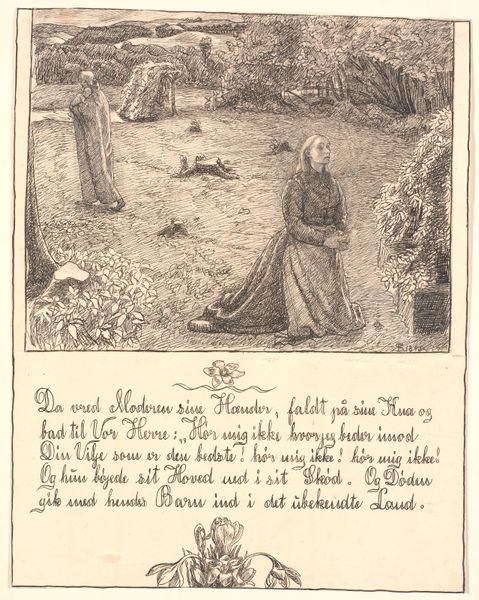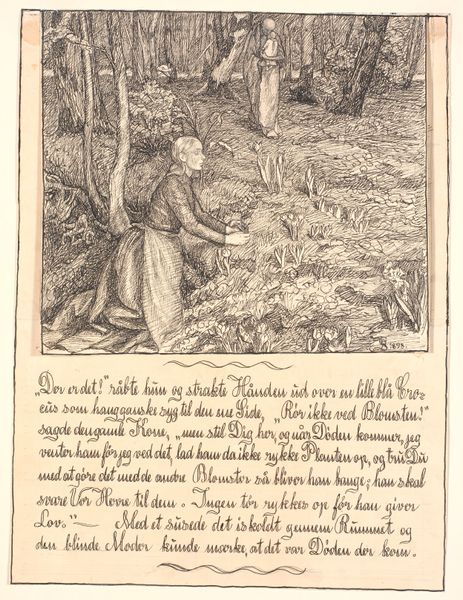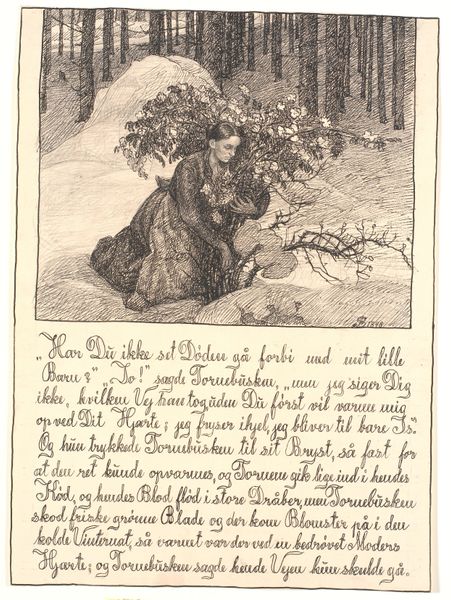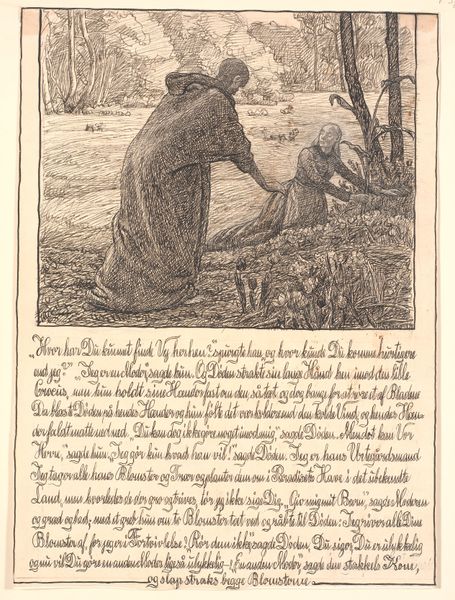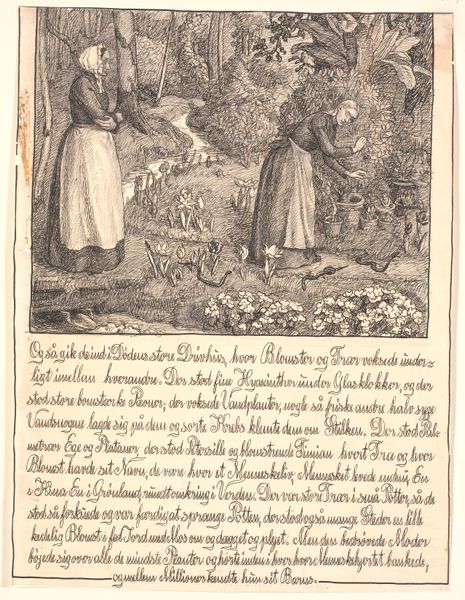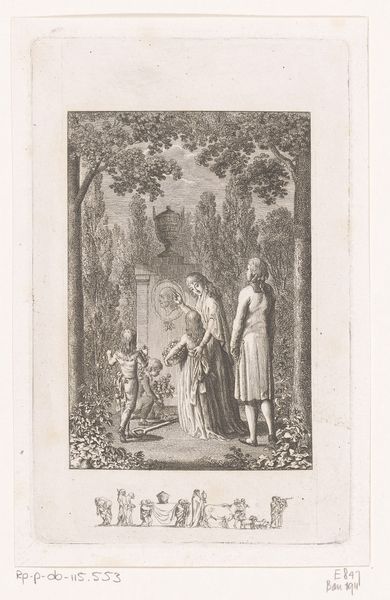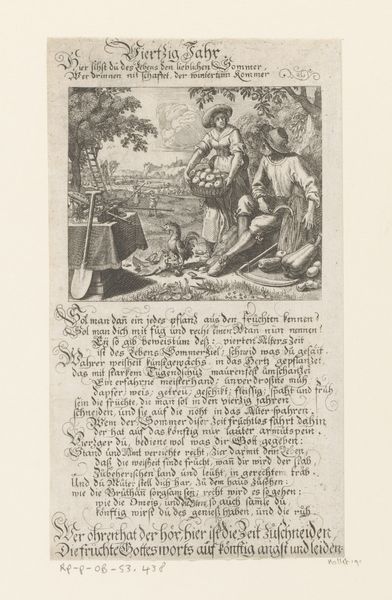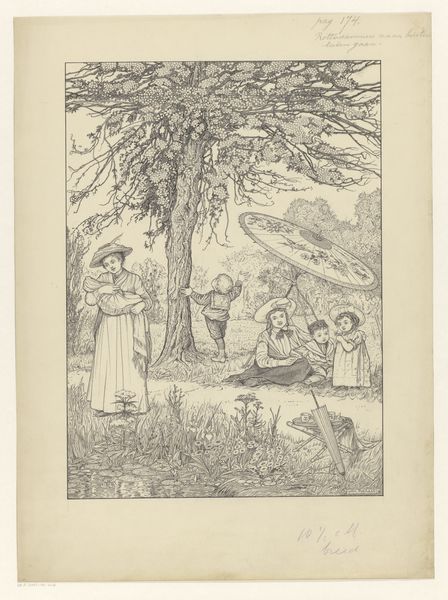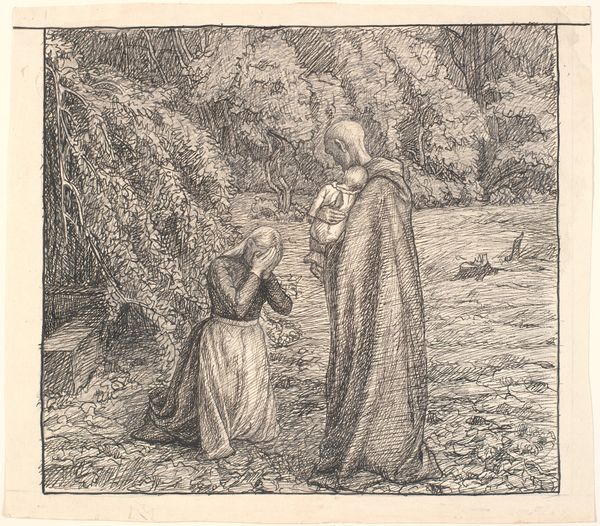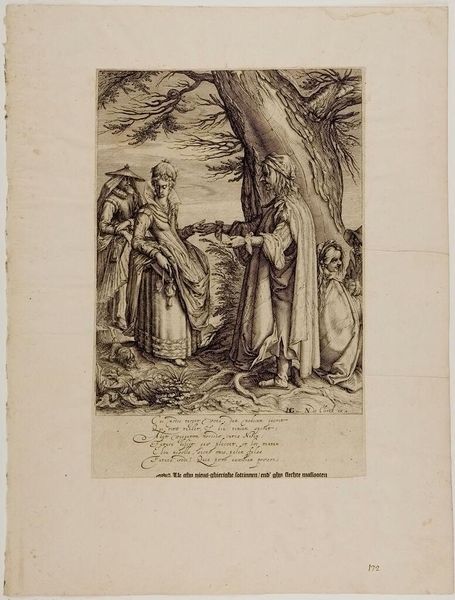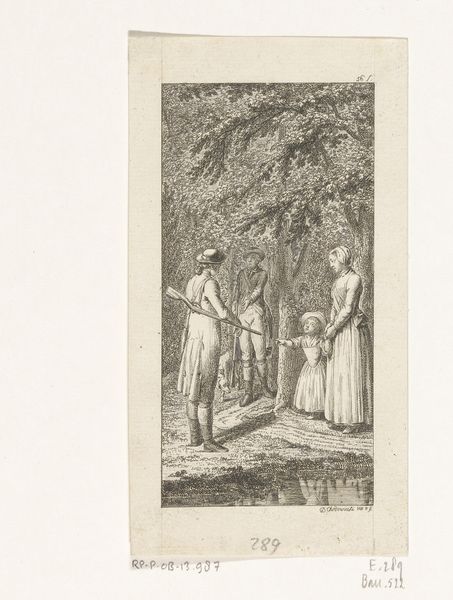
drawing, ink, pen
#
drawing
#
narrative-art
#
ink
#
pen
#
genre-painting
Dimensions: 518 mm (height) x 398 mm (width) (bladmaal)
Curator: Fritz Syberg created this drawing in 1897; it's called "Hvor skal jeg finde Døden...", or "Where Shall I Find Death...". It appears to be ink on paper. Editor: Immediately, the composition strikes me. It’s this stark, almost bleak scene, with two women centered but seeming quite isolated. The scratchy linework contributes to the somber mood; everything feels a bit… withered. Curator: Let’s dig into the means of its making: pen and ink, typically a medium for sketches or illustrations. Consider the dense cross-hatching; the labour invested in building up the tones suggests Syberg saw the print almost as a type of social document, highlighting the interaction and work of these figures. Editor: You’re right; there's something intensely material in how Syberg built those tones. Looking at it through the lens of narrative, the text beneath the drawing seems crucial. I read that it recounts the despairing plea to find a lost child and the unsettling exchange with what I interpret as grim reapers/death figures, one who's an elderly gravedigger and the other appears to be Moses from his signature to that exchange. The text adds layers of existential questioning and grief. How do these women fit within their intersectional spheres and personal journeys of grief? Curator: Precisely, considering the social context, these are working-class women, and the materiality of their world – represented by the bare trees and withered foliage – it mirrors a harsh social reality. We have this direct record in front of us because of the ink on paper and a moment memorializing Syberg's observations of his local sphere of social commentary. The composition choices, medium, and visual/text elements lead towards highlighting life's fragility with their environment; a stark comparison. Editor: This is less about heroic ideals, perhaps, and more about revealing something about female perseverance in the face of loss and decay. It pulls back from artifice. Curator: Absolutely. Syberg’s artistic process and choice of accessible materials serve this end: bearing witness to social dynamics without romanticism or the classical expectations of high art. Editor: Seeing it this way changes my perception completely. It shifts from a melancholic scene to a raw statement on labor and its impact within society, and this work’s materiality becomes a powerful voice. Curator: It encourages us to question how meaning itself is crafted, who dictates these means of production, and whose experiences ultimately are valued when we consider the cultural impact and social class divisions.
Comments
No comments
Be the first to comment and join the conversation on the ultimate creative platform.

